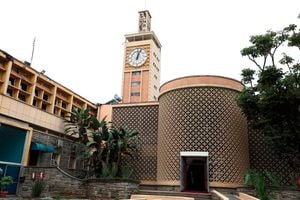EAC 35pc import duty on gas cylinders puts William Ruto plan in doubt

Retailers selling liquefied petroleum gas (LPG).
President William Ruto’s promise to lower the cost of gas cylinders could go up in smoke after Kenya opted to suspend the application of the East African Community (EAC) Common External Tariff of zero import duty in favour of 35 per cent for the next 12 months, effective July 1.
This means that the cost of imported liquefied petroleum gas (LPG) cylinders is set to increase, months after President Ruto said his government will reduce the cost of a 6kg-gas cylinder to between Sh300 and Sh500.
This was revealed in the EAC Gazette Notice of June 30, which shows that both Kenya and Uganda opted for the 35 per cent import duty rate as the rest of the member states kept the rate at zero.
“Uganda and Kenya will suspend the application of the EAC CET rate of 0% on LPG cylinders and apply a duty rate of 35 per cent for one year,” reads the notice.
In March this year, President Ruto announced that the government would subsidise the cost of a 6kg gas cylinder from July, with the aim of reducing the cost from Sh2,800 to Sh500.
“I have said that from July, we are going to make a number of interventions. First, we will remove the Value Added Tax on LPG. The 8 per cent that the government has been taking will be removed so that the majority can buy gas affordably. Secondly, today we are buying a 6-kilogramme cylinder of gas at Sh2,800. We will allocate funds to ensure that we reduce that cost from Sh2,800 to Sh500,” President Ruto said during the launch of the Taifa Gas plant in Dongo Kundu, Mombasa.
Stakeholders in the LPG sector say the tariff adjustment mirrors the Uhuru Kenyatta government’s intention to discourage importation of cylinders. However, they say that local manufacturing capacity is low and there is a need to ensure that local players are provided with a conducive environment to meet demand.
“Local cylinder manufacturing is fragmented and it is a challenge to say how much demand is being met domestically. But it is not that much. It looks like the government is trying to discourage the importation of cylinders through this measure. What this means is that for households that are starting to use LPG at this point in time, the one-off cost will be higher than it would have been otherwise,” said Martin Chomba, the chairman of the Petroleum Outlets Association of Kenya.
According to data from the just-released Kenya Health and Demographic Survey, 59.9 per cent of households in Kenya’s urban areas use LPG for cooking, compared to only 8.8 per cent in rural areas.





